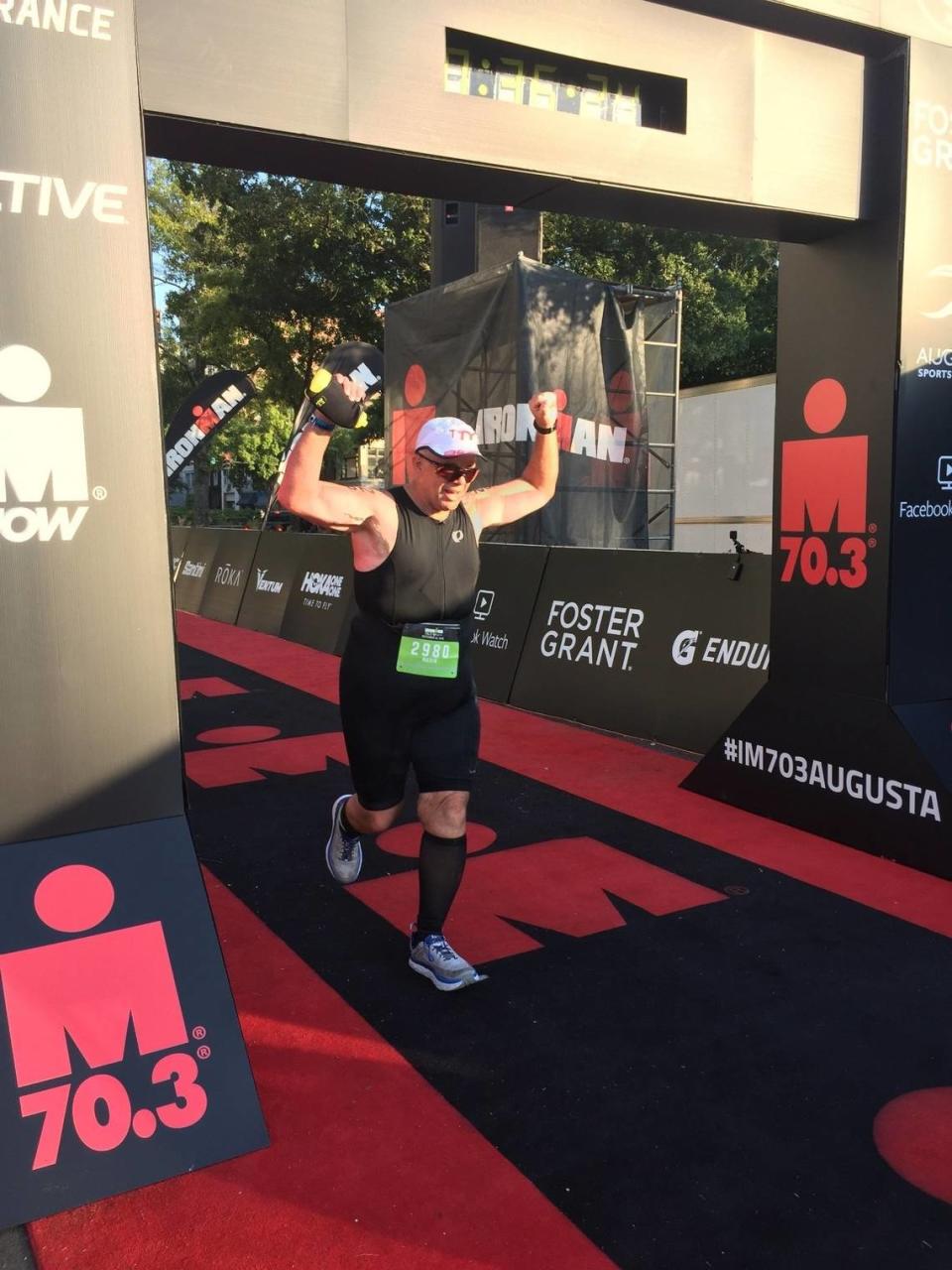He used to weigh nearly 400 pounds. Today, he’s completed a Half Ironman
When Mario Farnesi of Doral was 48, his father, who had diabetes, had a heart attack and died. He was 70 years old.
Shortly thereafter, he talked to his doctor.
“You don’t have to worry about dying of a heart attack at the age of 70 because you won’t make it to 70,” his doctor told him. “You’d be lucky if you died. You’ll likely end up in a vegetative state.”
Farnesi was in shock, but he listened.
Farnesi, who works as a building consultant and spends a lot of time on the road for his job, already had type 2 diabetes, reflux, and sleep apnea — all complications resulting from being overweight. His BMI (body mass index) was 54, way above the healthy BMI for a man, normally between 18.5 – 24.9, according to the CDC.
“More than 50% of Mario’s body was comprised of fat,” said Dr. Irving Miranda, associate director of bariatric and general surgery at Jackson Health System and who later became Farnesi’s doctor.

“I was knocking on the door of 400 lbs. I was so tired of being huge. I was always cautious about sitting on a chair because I was afraid I’d break it,” he said.

According to the Mayo Clinic, obesity is one of the leading causes of diabetes, which in itself can produce a slew of problems:
▪ Heart disease, stroke, high blood pressure
▪ Nerve damage
▪ Kidney damage
▪ Eye damage
▪ Slow healing
▪ Hearing impairment
▪ Sleep apnea
▪ Alzheimer’s
Surgery changed his life
After his father died, Farnesi decided that he was going to have bariatric surgery to get his weight and health under control.
There are several types of bariatric surgery, but all have the same goal: weight loss.
Miranda put a gastric sleeve into Farnesi, which consists of stitching up part of the stomach to make it smaller, thereby prompting the recipient to feel full sooner and eat less.
“He was always a little heavy, but he really made an effort to exercise, and every time he went out there, he’d hurt himself. Once he hurt his knee being active and the doctors told him it was because of his weight, so it was a difficult position to be in,” said his wife, Mireye Farnesi.
According to the American Society for Metabolic and Bariatric Surgery, people are candidates for bariatric surgery if they meet at least one of the following criteria:
▪ BMI ≥ 40, or more than 100 pounds overweight.
▪ BMI ≥ 35 and at least one or more obesity-related co-morbidity such as type 2 diabetes, hypertension, sleep apnea, non-alcoholic fatty liver disease, osteoarthritis, lipid abnormalities, gastrointestinal disorders or heart disease.
▪ Inability to achieve a healthy weight loss sustained for a period of time with prior weight loss efforts.
But, just because one is a candidate medically doesn’t mean insurance will cover it. It depends on the insurance plan, meaning some people pay out of pocket. All-in, the gastric sleeve surgery at Jackson Health System costs about $16,500, Miranda said. Farnesi fell into the self-pay category.
In May 2018, Farnesi had the surgery. The gastric sleeve is performed laparoscopically, meaning the doctors make a couple of very small incisions in the abdomen. The next day, Farnesi was on his way home.
For the first five weeks post-surgery, he worked his way back to eating solid foods. Initially, he experienced some nausea, but with time, that feeling passed.
Signing up for triathlon
After a couple of months, Farnesi was down to 290 pounds. While that was a big achievement, he felt that he plateaued.
Without the worry of getting hurt because of his weight, he signed up for triathlon training and in September 2019 he completed a half Ironman in Augusta, Georgia. The race consisted of a 1.2-mile swim, a 56-mile bike ride, and a 13.1-mile run.

He’s now down to 230 pounds, but among his biggest achievements is that he no longer has type 2 diabetes.
“It’s contagious,” Miranda said.
Family gets healthier
Farnesi and Mireye have three children ranging from ages 13 to 23. The family used to be sedentary because Farnesi couldn’t do much.
“It’s been awesome, because we went from sitting around wondering what we were going to do, to saying, ‘Let’s go for a bike ride in Shark Valley,’ ” Mireye said.
The family has also changed their eating habits. In addition to making healthier choices, they’ve also learned portion control from Farnesi.
“He’s a big guy, and if he only needs to eat that much, then well, we don’t need to eat more than that,” she added, noting that while they used to order individual dishes at restaurants, now one dish is enough for three of them.
But bariatric surgery alone isn’t enough, it’s a “stepping stone,” Farnesi said.
To lose the weight and keep it off, a lifestyle change is in order, which is why Jackson Health System equips their patients with nutritionists, psychologists, and support groups.
For Farnesi, bariatric surgery gave him the ability to take control of his life.
“If you don’t like where you’re at, you’ve just gotta change it,” he said.

